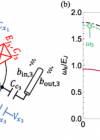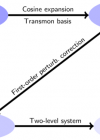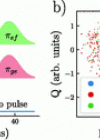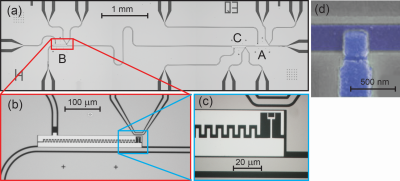Superconducting quantum circuits are composed of structures in which you can design and engineer their key properties in the fabrication process. From these designs, it is possible to have measurement parameters that can be in situ tuned right during experiment. These properties have made superconducting circuits to be one of the most promising candidates for realizing quantum computer in solid state architecture, have allowed for the exploration of quantum optical phenomena on a chip and have facilitated the implementation of a quantum control of nanomechanical degrees of freedom. Our group research continues to focus on superconducting nanodevices, which both use and probe mysterious principles of quantum physics.
Superconducting devices are made with the use of a variety of techniques available in modern nanofabrication facilities. Microwave transmission lines and resonators are made of Al and Nb metal films (Fig.1a) with established fabrication recipes and are highly reproducible. The most essential element within superconducting quantum circuits (see Fig. 1b,c) are Josephson junctions (Fig. 1d), of which the fabrication has also become well established and consists of having its pattern defined by electron beam lithography and successive deposition and oxidation of thin Al films. These superconducting circuits have two key features: very low dissipation thanks to superconductivity and a very high non-linearity of a Josephson junction – properties not found in any other electronic materials.
Superconducting circuits are operated at frequencies of a few GHz and can be cooled to their ground state with a dilution cryostat. Working with microwaves allows us to take advantage of the abundance of commercial electronics available in microwave frequency domain. Arbitrary wave generators and microwave sources are used to create high precision voltage and current controls of superconducting devices at the nanosecond timescale. Concurrently, commercial low noise amplifiers, together with newly developed on-chip quantum amplifiers, are used for the detection of electro-magnetic fields at the single photon level. A widely tunable geometry, reliable fabrication, advanced control and detection place superconducting circuits at the forefront of fundamental and applied research initiatives.
In the following sections you may find our research directions which will hopefully allow us to define the next generation of nanoelectronics based on the synergy of superconductive materials and quantum mechanics.









